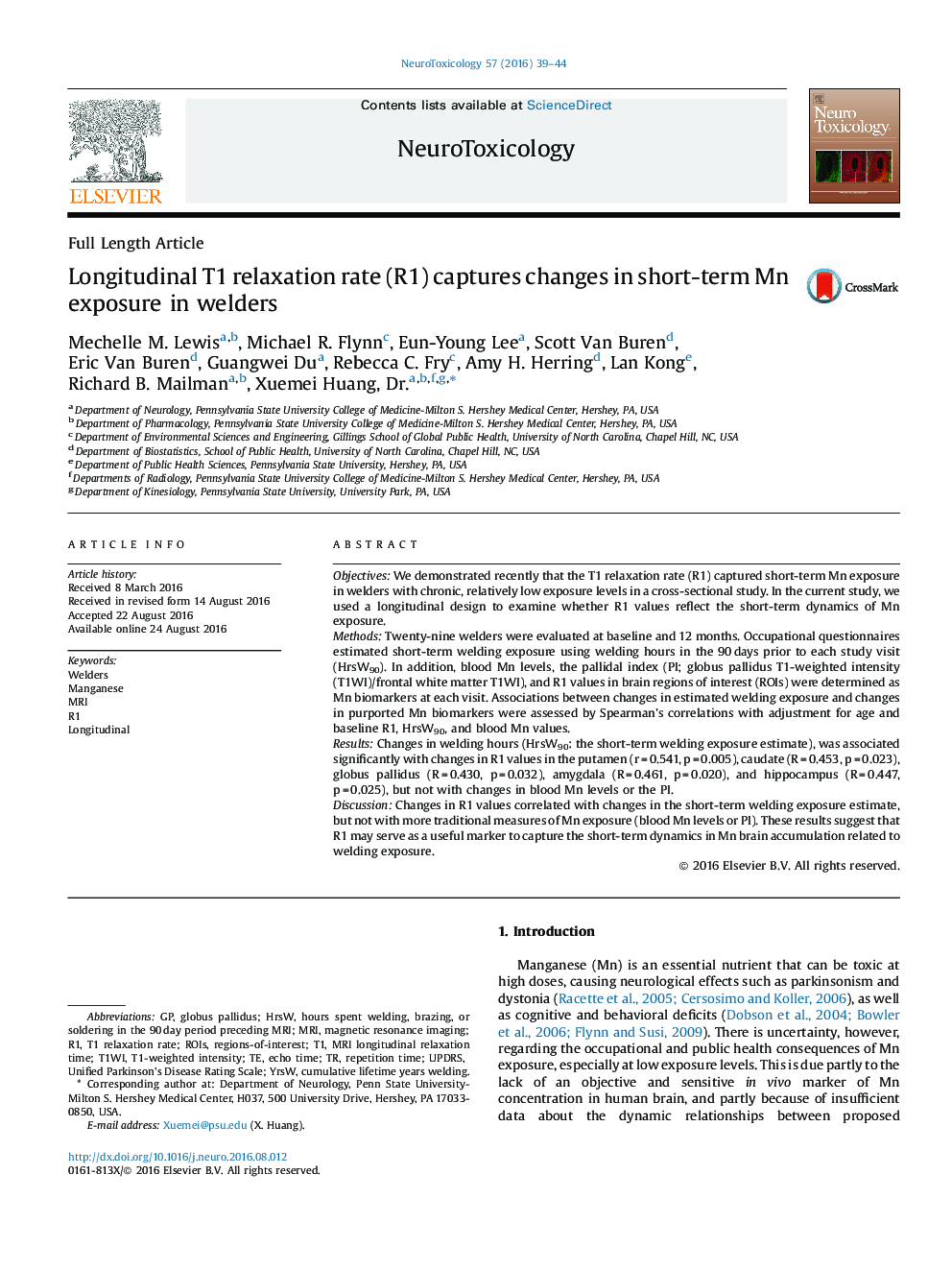| کد مقاله | کد نشریه | سال انتشار | مقاله انگلیسی | نسخه تمام متن |
|---|---|---|---|---|
| 2589401 | 1562037 | 2016 | 6 صفحه PDF | دانلود رایگان |
• A one-year follow-up study investigated associations between changes in estimated welding exposure and changes in purported Mn biomarkers in welders with chronic, low-level exposure.
• Traditional measures (blood Mn levels or the pallidal index) did not correlate with changes in estimated welding exposure levels (hours welding in the 90-day period prior to study visit).
• Changes in R1 values correlated significantly with changes in estimated welding exposure levels (hours welding in the prior 90-day period) in areas both within and outside basal ganglia regions.
• R1 may serve as a marker to capture short-term dynamics of Mn brain accumulation and clearance.
ObjectivesWe demonstrated recently that the T1 relaxation rate (R1) captured short-term Mn exposure in welders with chronic, relatively low exposure levels in a cross-sectional study. In the current study, we used a longitudinal design to examine whether R1 values reflect the short-term dynamics of Mn exposure.MethodsTwenty-nine welders were evaluated at baseline and 12 months. Occupational questionnaires estimated short-term welding exposure using welding hours in the 90 days prior to each study visit (HrsW90). In addition, blood Mn levels, the pallidal index (PI; globus pallidus T1-weighted intensity (T1WI)/frontal white matter T1WI), and R1 values in brain regions of interest (ROIs) were determined as Mn biomarkers at each visit. Associations between changes in estimated welding exposure and changes in purported Mn biomarkers were assessed by Spearman’s correlations with adjustment for age and baseline R1, HrsW90, and blood Mn values.ResultsChanges in welding hours (HrsW90: the short-term welding exposure estimate), was associated significantly with changes in R1 values in the putamen (r = 0.541, p = 0.005), caudate (R = 0.453, p = 0.023), globus pallidus (R = 0.430, p = 0.032), amygdala (R = 0.461, p = 0.020), and hippocampus (R = 0.447, p = 0.025), but not with changes in blood Mn levels or the PI.DiscussionChanges in R1 values correlated with changes in the short-term welding exposure estimate, but not with more traditional measures of Mn exposure (blood Mn levels or PI). These results suggest that R1 may serve as a useful marker to capture the short-term dynamics in Mn brain accumulation related to welding exposure.
Journal: NeuroToxicology - Volume 57, December 2016, Pages 39–44
